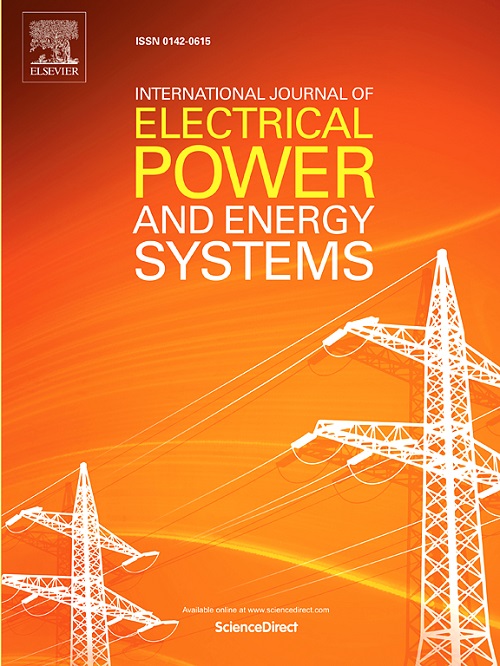推翻速度与保真度之间的权衡:在保持保真度的同时加快大规模能源模型的速度
IF 5
2区 工程技术
Q1 ENGINEERING, ELECTRICAL & ELECTRONIC
International Journal of Electrical Power & Energy Systems
Pub Date : 2025-04-24
DOI:10.1016/j.ijepes.2025.110674
引用次数: 0
摘要
能源系统模型对于规划和支持能源转型至关重要。然而,不断增加的时间、空间和部门分辨率导致了大规模的线性规划(LP)模型,这些模型经常(过度)简化以保持计算上的可处理性——通常以牺牲模型保真度为代价。本文挑战了普遍的信念,即LP公式不能在不牺牲其准确性的情况下得到改进。受图论的启发,我们建议使用能源资产(顶点)作为单个构建块,并在它们之间连接流来建模能源系统。这减少了对节点和连接等附加组件的需求。由此产生的公式更紧凑,而不牺牲准确性,并利用了能量系统固有的图形结构。为了评估性能,我们实现并比较了四种常见的建模方法,这些方法在使用构建块和流表示方面有所不同。我们使用TulipaEnergyModel进行实验。并将它们应用于具有不同问题规模的多部门案例研究。结果表明,我们的单构建块(1BB-1F)方法分别减少了26%和35%的变量和约束,并在不损失模型保真度的情况下实现了1.27倍的平均求解时间加速。随着问题规模的增加,加速也会增加,这使得这种方法对大规模模型特别有利。我们的研究结果表明,并非所有lp的质量都是相同的,更好的重新配方可以带来可观的计算效益。本文还旨在提高对能源系统优化中模型质量考虑因素的认识,并在不影响保真度的情况下促进更有效的配方。本文章由计算机程序翻译,如有差异,请以英文原文为准。

Debunking the speed-fidelity trade-off: Speeding-up large-scale energy models while keeping fidelity
Energy system models are essential for planning and supporting the energy transition. However, increasing temporal, spatial, and sectoral resolutions have led to large-scale linear programming (LP) models that are often (over)simplified to remain computationally tractable—frequently at the expense of model fidelity. This paper challenges the common belief that LP formulations cannot be improved without sacrificing their accuracy. Inspired by graph theory, we propose to model energy systems using energy assets (vertices), as a single building-block, and flows to connect between them. This reduces the need for additional components such as nodes and connections. The resulting formulation is more compact, without sacrificing accuracy, and leverages the inherent graph structure of energy systems. To evaluate performance, we implemented and compared four common modelling approaches varying in their use of building blocks and flow representations. We conducted experiments using TulipaEnergyModel.jl and applied them to a multi-sector case study with varying problem sizes. Results show that our single-building-block (1BB-1F) approach reduces variables and constraints by 26% and 35%, respectively, and achieves a 1.27x average speedup in solving time without any loss in model fidelity. The speedup increases with problem size, making this approach particularly advantageous for large-scale models. Our findings demonstrate that not all LPs are equal in quality and that better reformulations can lead to substantial computational benefits. This paper also aims to raise awareness of model quality considerations in energy system optimisation and promote more efficient formulations without compromising fidelity.
求助全文
通过发布文献求助,成功后即可免费获取论文全文。
去求助
来源期刊
CiteScore
12.10
自引率
17.30%
发文量
1022
审稿时长
51 days
期刊介绍:
The journal covers theoretical developments in electrical power and energy systems and their applications. The coverage embraces: generation and network planning; reliability; long and short term operation; expert systems; neural networks; object oriented systems; system control centres; database and information systems; stock and parameter estimation; system security and adequacy; network theory, modelling and computation; small and large system dynamics; dynamic model identification; on-line control including load and switching control; protection; distribution systems; energy economics; impact of non-conventional systems; and man-machine interfaces.
As well as original research papers, the journal publishes short contributions, book reviews and conference reports. All papers are peer-reviewed by at least two referees.

 求助内容:
求助内容: 应助结果提醒方式:
应助结果提醒方式:


